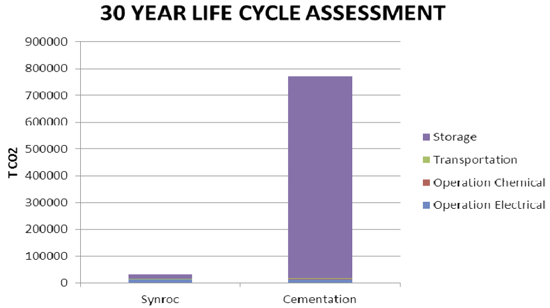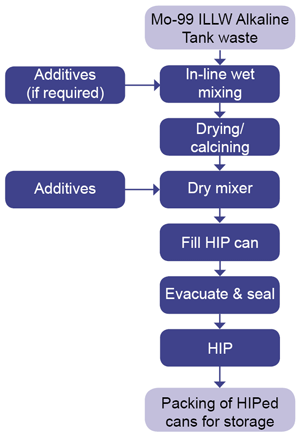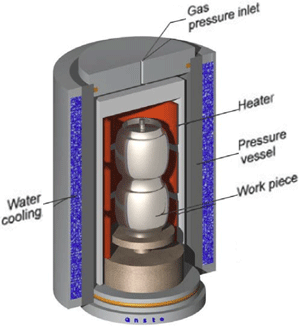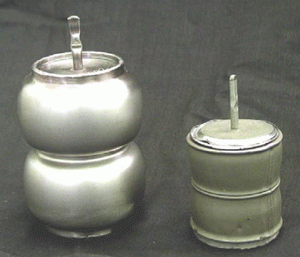A nuclear waste disposal system enabled by hot isostatic pressing technology
Dr. David Whittaker reviews this presentation exclusively for ipmd.net
The safe handling and disposal of waste material is key to public acceptance of the use of nuclear technology in power generation and other applications.
ANSTO has over 30 years’ experience in the development of synroc waste forms for the immobilisation and safe disposal of high level (HLW) and intermediate level (ILW) nuclear wastes.
A radioactive waste is a material, into which the radioactive waste ions/materials are incorporated for immobilisation. Typical waste forms in use are various types of cement, borosilicate glass, various ceramics, polymers, bitumen and metal alloys. Waste forms are then contained in one or more overpacks/containers that form a waste package for disposal or storage.
Synroc is a particular type of synthetic rock, which can offer an effective and durable means of immobilising various forms of radioactive HLW, ILW and long lived wastes such as actinides.
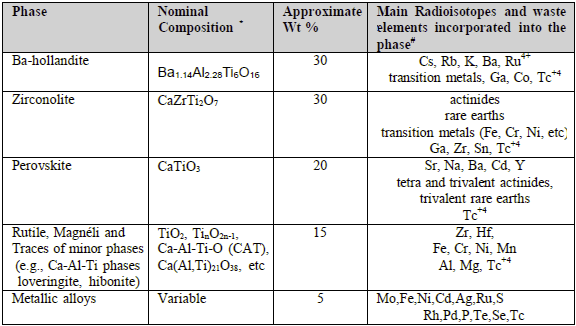
# the list is not exhaustive and more substitutions are feasible
* The compositions shown in this Table do not show the HLW elements. HLW ions will substitute for the precursor ions in each mineral phase, e.g., Sr2+ substitutes for Ca2+ in perovskite, Cs+ occupies the Ba2+ site in hollandite, and Pu3+ can occupy the Ca site, together with Pu4+ in the Zr site in zirconolite. The precursor ions can also change sites; e.g., Ti3+, formed under the reducing processing conditions can substitute for Al3+ in hollandite.
Table 1 Typical phase composition of Synroc-C with 20 wt% HLW (Courtesy MPIF)
Synroc-C was originally developed as a waste form for immobilising HLW arising from the reprocessing of spent light water reactor nuclear fuel and was a ceramic consisting of a mixture of the mineral phases identified in Table 1.
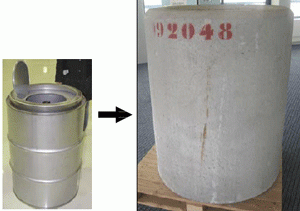
Fig. 1 40 litres of 99Mo ILLW waste is treated in 200
litres of cement and then grouted into 1000 litre
concrete container (Courtesy MPIF)
ANSTO has subsequently collaborated with American Isostatic Presses Inc. to develop the synroc-ANSTO HIP Plant, which has been designed to treat intermediate level liquid wastes (ILLW) arising from its own in-house production of 99Mo for radiopharmaceutical use by irradiating Uranium alloy targets. By combining waste form chemistry design, to produce flexible waste forms with high waste loadings, with HIPping technologies, significant waste volume reductions are possible compared with both stored liquid waste and alternative waste form options, such as cement or vitrification.
ANSTO predicts that, at current production levels, it will generate an average of 2,000 litres per year of alkaline liquid waste from its 99Mo production line. If this ILLW were to be disposed of in cement, this would create around 50 x 200 litre drums per year. Each of these drums would then be overpacked and grouted into a 1,000 litre concrete container (Fig. 1), therefore creating 50,000 litres of concrete waste for storage or disposal each year.
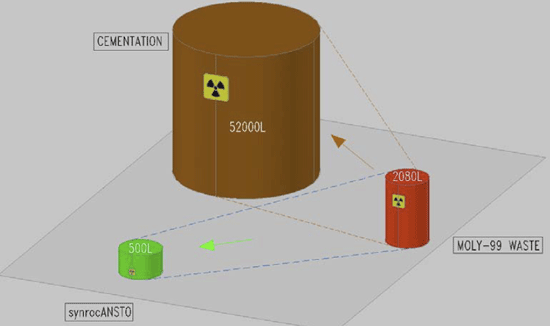
Fig. 2 Relative comparison of waste form volumes generated per year from the synroc-ANSTO HIP waste treatment process vs. cement waste form
In contrast, the synroc HIP waste treatment process would only produce around 500 litres of waste form from the same volume of 99Mo ILLW (Fig. 2). Unlike the cement process, the HIPped product does not require a further encapsulation barrier in a concrete over-pack, as the waste is immobilised in a glass ceramic matrix and is hermetically sealed in a stainless steel container. It only requires appropriate shielding for transportation and storage. This significant waste volume reduction also creates significant cost savings from reductions in storage building size, the number of transport shipments and the eventual repository disposal space required.
Additionally, an analysis of the carbon footprint of the synroc process shows a significant reduction in CO2 over the cementation process, with the major savings coming from the relative storage repository sizes required (Fig. 3).
The basic synroc-ANSTO HIP process is shown in Fig. 4.
The processing of the 99Mo waste starts when it is pumped to the wet mixer, where wet additives are introduced, and the mixture is then sent to the dryer/calciner to produce a free flowing powder. This powder is then blended in the dry mixer with further additives and transferred to dry storage ready to fill a stainless steel HIP can, using a proprietary designed system. The next stage involves sealing the filling port and evacuation of the can. After the prescribed vacuum level is attained, the can is hermetically sealed.
The sealed stainless steel can is placed into an ACOP (Active Containment Over-Pack), a safety device that provides another layer of protection for the HIP vessel and the surrounding environment in the unlikely event of a failure.
The ACOP is transferred to the HIP vessel (Fig. 5) and processed to produce a dense, durable glass-ceramic or ceramic with a high waste loading. The entire process produces off-gas only in the calcination stage where temperatures are much lower than those in the final consolidation.
Significant volume reductions of greater than 50% of the starting volume are readily achievable during the HIPing process (Fig. 6). The hermetically sealed can is then unloaded from the ACOP, inspected for integrity and loaded into a storage canister with other processed cans awaiting storage and final disposal.
The development of the HIP process focussed on some critical technology elements for the process to be applied to radioactive waste treatment:-
- The use of high pressure in a hot cell environment
- The spread of contamination
- The scale-up of the process
- HIP can failure leading to damage of the HIP vessel and release of radioactive material.
In this type of application, system safety is naturally of paramount importance. In terms of vessel design, this has led to the adoption of a forged vessel rather than a wire wound, pre-tensioned vessel. This was principally because a leak before burst design can be more readily incorporated into a forged shell and heads. A wire wound vessel, in theory, may also offer a leak before burst feature; however, the forged vessel has the key advantage that, in the event of overheating, stress relaxation will not lead to distortion of the yoke frame, causing a sudden release of pressure.
Additionally, the advantage of a forged vessel is the ability to monitor crack growth at inspection intervals and determine remaining operational life.
Contamination control is the other major system safety issue. Once the HIP can has been filled, it is subject to complete surface decontamination. Once clean, it is placed in the ACOP that serves as a secondary containment system. In the unlikely event of a can failure due to a manufacturing defect, the high pressure environment in the HIP vessel would serve to constrain the material within the container and the ACOP would provide an additional measure of protection.
All vent gas from the HIP is passed through in-cell HEPA filters prior to being exhausted either into the cell ventilation system or reclaimed for recycle.
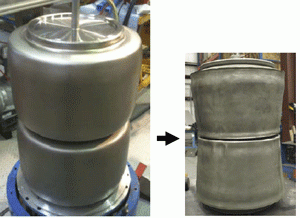
Fig. 7 100 litre ANSTO HIP can containing over 170kg
of simulated ceramic waste form, before HIPping
(left) and after HIPping (right) (Courtesy MPIF)
The ability to keep the HIP vessel and hot cell free from radioactive contamination allows for manned entry. Eliminating the need to design in-cell equipment for remote maintenance has major cost saving benefits. To accommodate a manned entry maintenance strategy, the cell is designed with an automated remote HIP can loading and unloading system that that is able to remove or isolate the radioactive source behind shielding in the event of an equipment failure or scheduled maintenance.
ANSTO has now demonstrated scale-up of this process at a greater than 170kg scale (Fig. 7).
News | Articles | Market reviews | Search directory | Subscribe to e-newsletter



